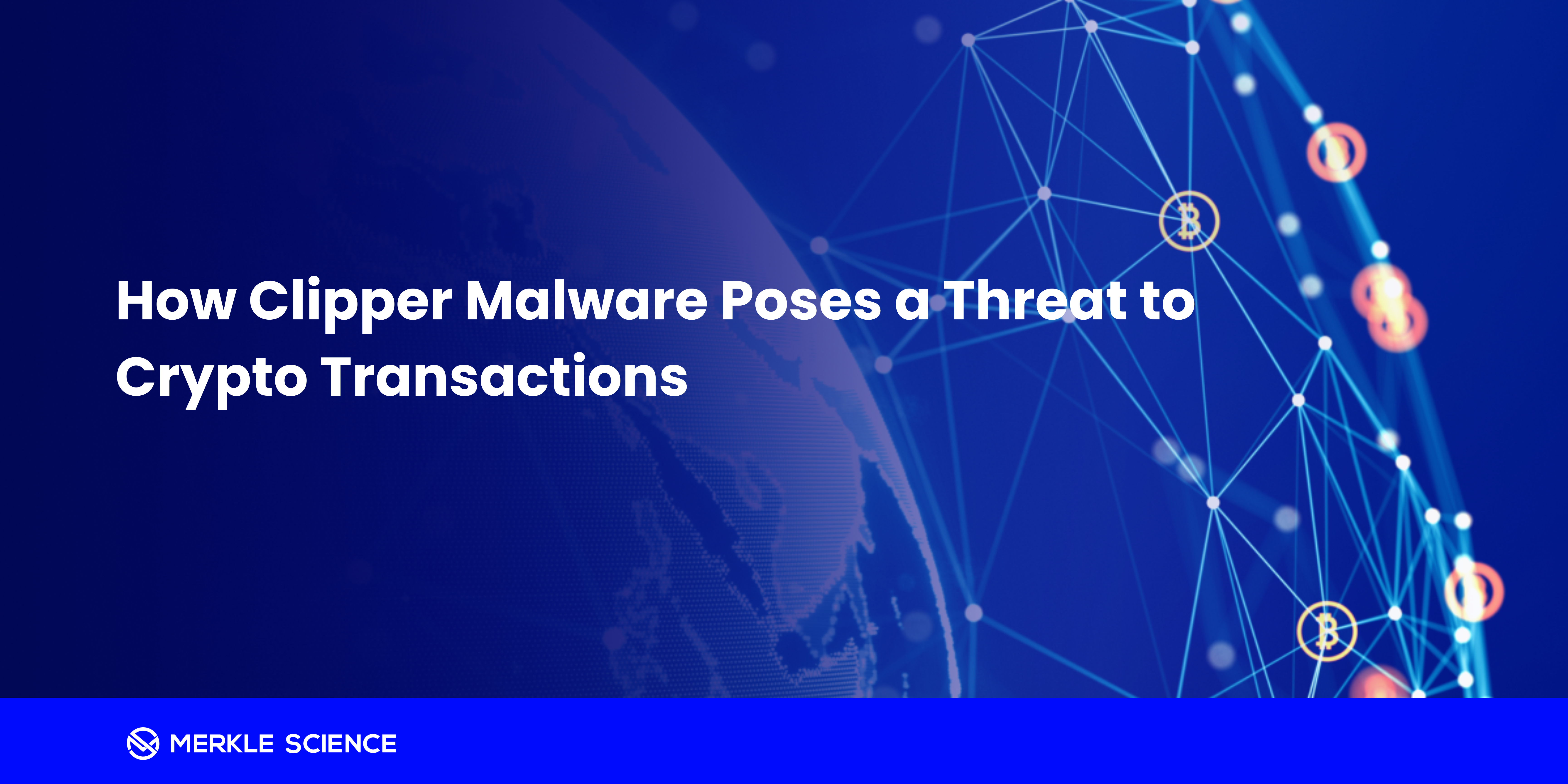How Clipper Malware Poses a Threat to Crypto Transactions

Merkle Science

Clipper malware targets the clipboard functionality on computers often used to copy and paste crypto addresses. With Clipper installed, victims inadvertently send funds to the hacker's wallet instead of their intended destination.
This article explores the common attack vectors for Clipper and how it operates once installed.
Since Clipper can affect individual users and enterprises, we will also discuss strategies for preventing, identifying, and defending against this threat.
What Is Clipper Malware and How Does It Spread?
Clipper malware first appeared in 2017. It compromises the clipboard functionality of a victim's computer, replacing any string resembling a wallet address with the hacker's wallet address. Sometimes, Clipper may also steal private keys if the victim uses their clipboard to copy and paste them.
There are several common attack vectors for Clipper.
- Fake instances of legitimate apps: In February 2019, a fake version of the crypto wallet MetaMask on Google Play was identified as delivering Clipper. This targeting was strategic: instead of infecting users en masse—many of whom may not use crypto—the hackers gained access to the clipboards of people actively sending or receiving digital assets.
- Software from unofficial sources: Hackers installed a Trojanized version of the Tor browser with Clipper and made it available for download on unauthorized third-party sources. This version maintained the functionality of the legitimate Tor browser while covertly installing Clipper. By March 2023, this campaign netted criminals $400K.
- Compromised legitimate apps: Even legitimate apps are vulnerable. Some apps available on the Google Play Store have been found to contain Clipper malware.
In addition to these examples, criminals may employ standard malware delivery methods, such as phishing emails with malicious attachments or compromised websites.
How Clipper Malware is Used for Crypto Transactions
Clipper exploits the common practice of using the clipboard during cryptocurrency transactions. Due to the complexity and length of crypto wallet addresses, users often copy and paste addresses rather than typing them manually, creating an opportunity for Clipper to intervene.
Here is how a Clipper attack typically unfolds:
- Clipboard monitoring: Once installed, Clipper monitors the victim's clipboard for patterns matching crypto wallet addresses. A crypto wallet address is an alphanumeric string with format-specific patterns, typically longer than 26 characters. For example, Bitcoin addresses are 26 to 35 characters long, while Ethereum addresses begin with "0x" followed by 40 characters.
- Address substitution: Upon detecting a crypto address, Clipper swaps the victim's address with the hacker's address in real time. The victim unknowingly pastes the hacker's address into their transaction. Many users may not notice the change, especially if unaware of clipboard-based attacks.
- Transaction execution: Unaware of the substitution, the victim confirms the transaction, sending funds intended for their wallet to the hacker's wallet. This tactic is more insidious than address poisoning, where criminals rely on users copying a spoofed vanity address that was injected into their transaction history through crypto dust. Clipper's real-time substitutions make it harder to detect and mitigate.
How to Prevent and Detect Clipper Malware
Clipper is particularly stealthy malware, making prevention and detection critical. To protect themselves, users should adopt best practices in cybersecurity.
- Reduce attack vectors: Avoid downloading software from unofficial sources, visiting suspicious websites, and opening attachments from unfamiliar emails. Regularly update apps and software to ensure the latest security patches are installed.
- Install antivirus software: Use trusted antivirus software to detect and block threats. Configure the antivirus to perform regular scans and enable features that monitor clipboard activity for irregular patterns.
- Double-check wallet addresses: Always copy wallet addresses from trusted sources, such as the wallet provider's interface. After pasting an address, verify it in full rather than relying on the first and last few characters. If the pasted address differs from the original, avoid completing the transaction and investigate for potential Clipper infections.
- Employee education: Enterprises managing crypto wallets should educate employees about Clipper and other malware threats. Training programs should emphasize the risks of clipboard-based attacks to prevent organizational funds from being compromised.
By following these strategies, individual users and organizations can significantly mitigate the risk of Clipper malware.
Conclusion
Education is the most effective defense against Clipper malware. When users and employees understand the vulnerabilities of clipboard functionality, they can remain vigilant during cryptocurrency transactions.
Comprehensive training on clipper malware and other security risks led by crypto crime investigators can enhance awareness and preparedness for enterprises. Merkle Science offers such education through its Institute, utilizing tools like Tracker and Compass for hands-on training.
To learn more about Institute, Tracker, or Compass, contact Merkle Science.


